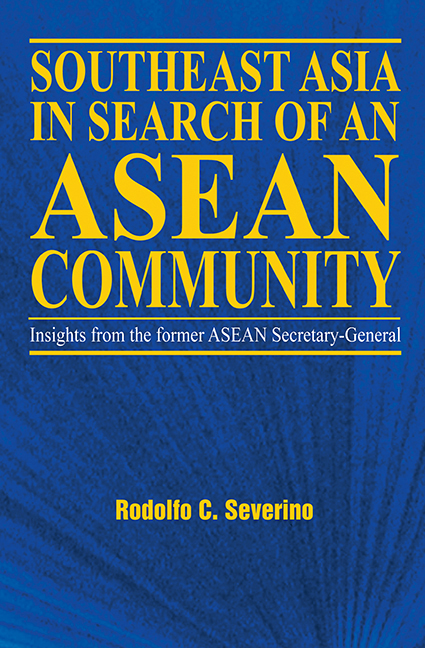Book contents
- Frontmatter
- Contents
- Foreword
- Introduction
- About the Author
- Acknowledgements
- Glossary
- 1 The “ASEAN Way”: Its Nature and Origins
- 2 Who Belongs in ASEAN? The Question of Membership
- 3 The Issue of Non-Interference
- 4 Regional Security: The ASEAN Role
- 5 Integrating the Regional Economy
- 6 ASEAN and the World
- 7 The ASEAN Community: Is It for Real?
- 8 What Kind of Future for ASEAN?
- Appendices
- Interviews
- Index
1 - The “ASEAN Way”: Its Nature and Origins
Published online by Cambridge University Press: 21 October 2015
- Frontmatter
- Contents
- Foreword
- Introduction
- About the Author
- Acknowledgements
- Glossary
- 1 The “ASEAN Way”: Its Nature and Origins
- 2 Who Belongs in ASEAN? The Question of Membership
- 3 The Issue of Non-Interference
- 4 Regional Security: The ASEAN Role
- 5 Integrating the Regional Economy
- 6 ASEAN and the World
- 7 The ASEAN Community: Is It for Real?
- 8 What Kind of Future for ASEAN?
- Appendices
- Interviews
- Index
Summary
In the early days of August 1967, five men, ministers representing the governments of five Southeast Asian countries, gathered in the beach resort of Bangsaen, less than a hundred kilometres southeast of Bangkok, to play golf and tell stories and jokes. They also went about the serious business of founding a new association for Southeast Asia and arguing over the contents of the declaration that would bring it about.
One of them was Adam Malik, “Presidium Minister for Political Affairs” and Foreign Minister of the New Order in Indonesia under General Soeharto. Soeharto had taken over the presidency from President Sukarno in March 1967. Sukarno had been eased out of actual power the year before, following the coup attempt of September 1965 and the massive bloodbath that ensued. The Sumatran firebrand of the Indonesian revolution, Adam Malik was, with Soeharto and Sultan Hamengku Buwono IX of Yogyakarta, one of the triumvirate at the head of the New Order, and would be the President, in 1971–72, of the United Nations General Assembly.
There was Tun Abdul Razak, then Deputy Prime Minister, Minister for Defence and Minister for National Development, second-in-command to Tunku Abdul Rahman, the father of Malaysia. He was, two years later, to be entrusted with the operation of emergency rule that would be imposed on the country after the race riots of May 1969. In that capacity and, eventually, as the Tunku's successor as Prime Minister, he led the work of laying the foundations for ensuring that such inter-ethnic conflicts would not happen again.
Narciso Ramos, the Secretary of Foreign Affairs of the Philippines, had been a journalist, an anti-Japanese guerrilla fighter, legislator and diplomat (Minister-Counsellor in Washington, D.C., and Ambassador in Buenos Aires, New Delhi and Taipei). He was the father of Fidel Ramos, then an officer in the Philippine Civic Action Group in Vietnam and, much later, President of the Philippines.
S. Rajaratnam was one of the group of statesmen, led by Lee Kuan Yew, who founded modern Singapore. Born in his parents’ native country, then called Ceylon, Rajaratnam grew up in Malaya, went to school in Malaya and Singapore, and studied law at King's College in England. After some years as a fiery editorial writer in several Singapore newspapers, he entered politics, becoming Minister for Culture.
- Type
- Chapter
- Information
- Southeast Asia in Search of an ASEAN Community , pp. 1 - 40Publisher: ISEAS–Yusof Ishak InstitutePrint publication year: 2006



